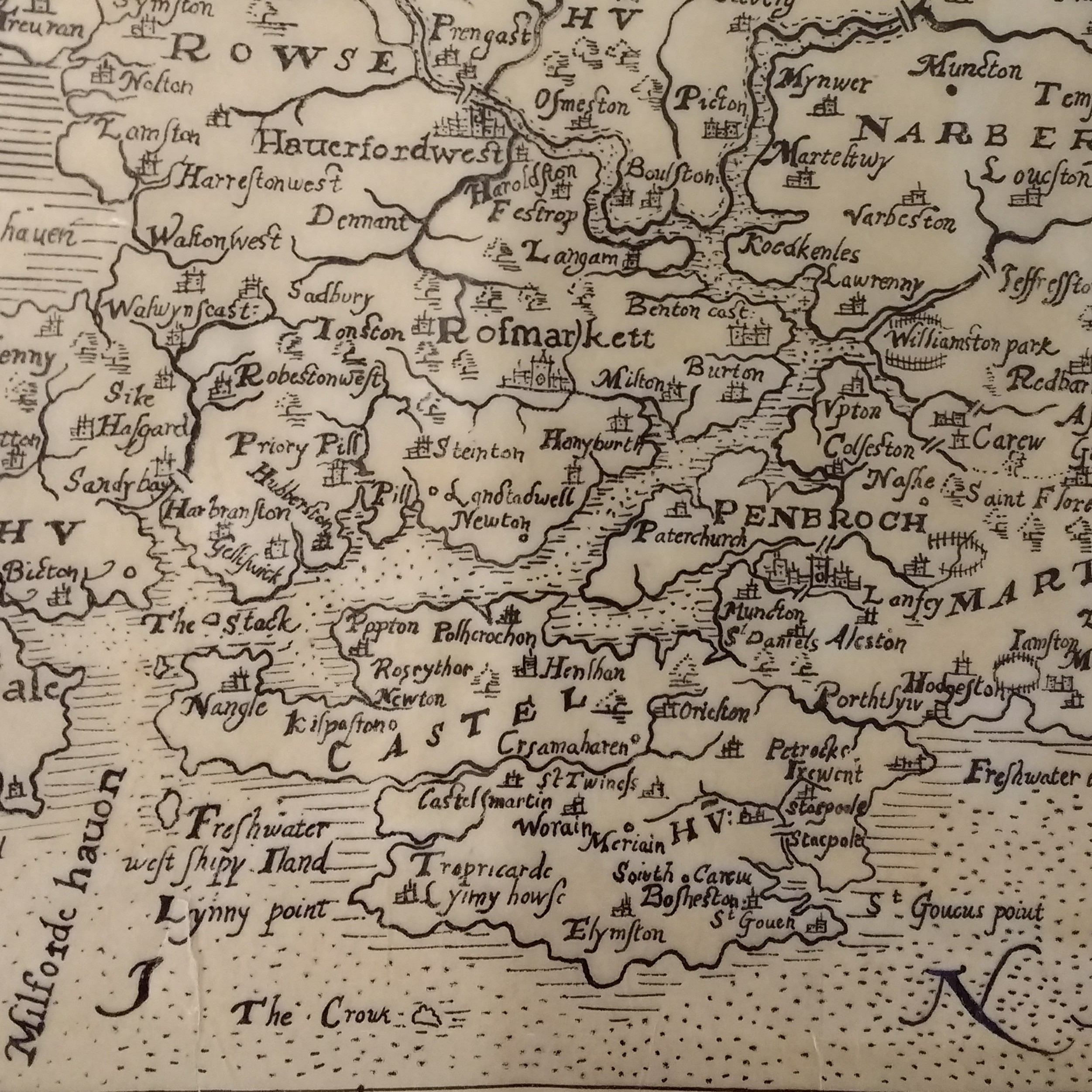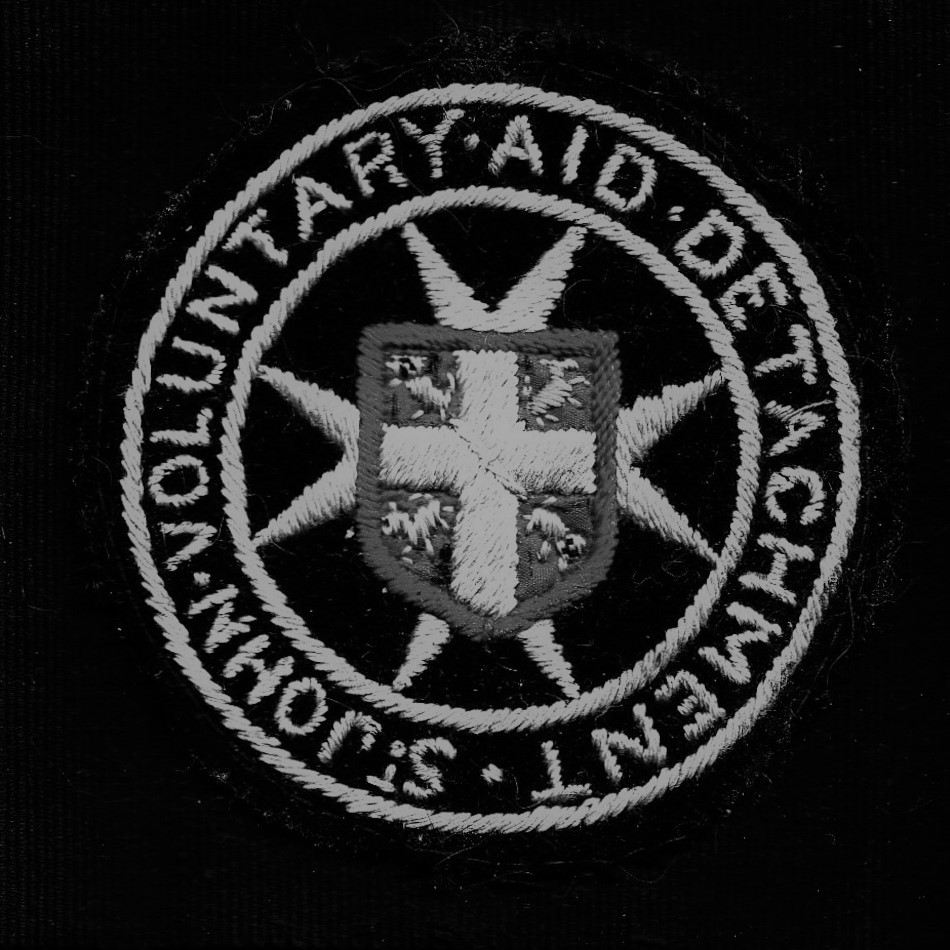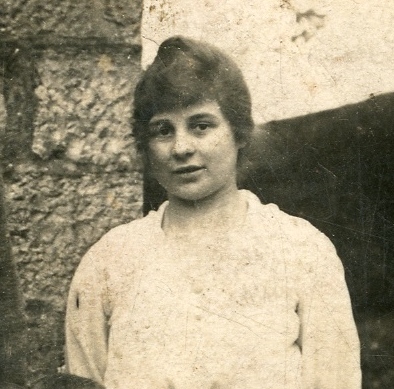Mary Curtis
Mary Curtis was born in 1815 in Stepney, London, but is an honorary ‘Woman of West Wales’ who adopted Laugharne, Carmarthenshire as her home and left a lasting legacy for future generations.
Mary moved to Laugharne in 1855, having previously worked as a governess and landscape painter in London’s East End. She initially lodged in King Street, Laugharne and was listed in census records as a ‘Governess’. However, in later life she was described as an ‘Authoress’ and spent many years researching the history of her adopted home and her book ‘Antiquities of Laugharne and Pendine’ was published in 1871. A review from the Carmarthen Journal in 1880 stated:
‘Ladies have not hitherto acquired much celebrity as antiquaries but there is no reason why they should not equal men in this department of research…We wish someone in every district would do for their neighbourhood what Miss Curtis has done for Laugharne…and we should soon have a body of information out of which the much longed-for history of Wales might be written’. Furthermore, in an era dominated by male-centred depictions of history, Mary Curtis arguably depicts a feministpoint of view. In describing the formation of Britain as a whole she writes: ‘By the old British law a woman might rule the kingdom as well as a man; and among the Picts too, the succession went wholly by the female side’.
Unlike some of her contemporaries, Mary’s writing places significance on the lives of working-class women in rural West Wales. From her, we learn of ‘farm maids…with baskets of butter, some with poultry and eggs; themselves the perfection of neatness…The laboring people find great support from the sale of fish…when the women come in from the sands with their bags of cockles; perhaps they have walked miles. They return as they went, in groups…with hats of all sizes and shapes, generally with the well-known handkerchief tied over their head…wooden shoes; some with baskets, others with tin pans on their heads full of cockles, which they poise admirably with their arms akimbo.’ Later Mary dedicates an entire chapter to the clothing of rural women, with detailed information on authentic materials and techniques for making the traditional Welsh Costume.
In the preface of her book, Mary thanks the people of Laugharne for ‘furnishing (her) with so many interesting facts’ and describes ‘how pleasant an occupation it has been to collect and record the history of a place in which (she) found so many kind friends’. Both ‘facts and friendships’ in Mary’s experience, are enriched by the testimonies of women and, in representing female endeavor herself, acknowledges how ‘the advantages and pleasures of intellectual pursuits are finite and never ending’.
Mary Curtis died in 1895 and a decade later, her contribution to preserving the heritage of rural West Wales was acknowledged with a somewhat backhanded compliment. The Welshman declared in June 1909 , ‘Laugharneshire is so deeply indebted (to Mary Curtis) for the preservation of our folklore and other interesting matters which must ere this have been irretrievably lost had she not, in her oftentimes quaint manner, recorded it’. Nevertheless, many historians still refer to ‘The Antiquities of Laugharne and Pendine’ and it has since been described as a ‘minor classic of its genre’.
Ganed Mary Curtis yn 1815 yn Stepney, Llundain, ond ‘Menyw o Orllewin Cymru’ oedd hi go iawn a fabwysiadodd Lacharn, Sir Gaerfyrddin fel ei chartref, a gadael gwaddol barhaol ar gyfer y cenedlaethau i ddod.
Symudodd Mary i Lacharn yn 1855, ar ôl gweithio fel ‘athrawes gartref’ ac arlunydd tirluniau yn Nwyrain Llundain. I ddechrau bu’n byw yn Stryd y Brenin, Lacharn, ac fe’i rhestrwyd yng nghofnodion y cyfrifiad fel ‘Athrawes Gartref’. Fodd bynnag, yn ddiweddarach yn ei bywyd fe’i disgrifiwyd fel ‘Awdures’ a threuliodd flynyddoedd lawer yn ymchwilio i hanes ei chartref mabwysiedig a chyhoeddwyd ei llyfr ‘Antiquities of Laugharne and Pendine‘ yn 1871. Roedd adolygiad o’i llyfr yn y Carmarthen Journal yn 1880 yn nodi:
‘Ladies have not hitherto acquired much celebrity as antiquaries but there is no reason why they should not equal men in this department of research…We wish someone in every district would do for their neighbourhood what Miss Curtis has done for Laugharne…and we should soon have a body of information out of which the much longed-for history of Wales might be written’. Ar ben hynny, mewn oes lle mai dynion yn bennaf oedd yn dehongli hanes, gellir dadlau bod Mary Curtis yn cyfleu safbwynt ffeministaidd. Wrth ddisgrifio’r modd y cafodd gwledydd Prydain eu ffurfio, mae’n ysgrifennu: ‘Yn ôl hen gyfreithiau Prydain gallai menyw reoli’r deyrnas yn ogystal â dyn; ac ymhlith y Pictiaid hefyd, aeth yr olyniaeth yn gyfan gwbl ar y llinach fenywaidd’.
Yn wahanol i rai o’i chyfoeswyr, mae gwaith llenyddol Mary yn talu sylw i fywydau menywod dosbarth gweithiol yng nghefn gwlad Gorllewin Cymru. Ganddi hi y dysgwn am ‘forynion fferm…â basgedi o fenyn, rhai â ffowls a wyau; ac yn edrych yn hynod drwsiadus.. mae’r werin yn cael cryn fudd o werthu pysgod…pan ddaw’r menywod mewn o’r traethau â’u bagiau o gocos; digon posibl eu bod wedi cerdded milltiroedd. Maent yn dychwelyd fel yr aethant, mewn grwpiau..yn gwisgo hetiau o bob math a llun, ac fel arfer gyda’r necloth cyfarwydd wedi’i rwymo o gwmpas y pen…clocs ar eu traed; rhai â basgedi, eraill â phedyll tun ar eu pennau yn llawn cocos, a llwyddant i’w dal yn osgeiddig â’u dwylo ar y wast’. Yn ddiweddarach mae Mary yn neilltuo pennod gyfan i ddillad menywod gwledig, gyda gwybodaeth fanwl am ddeunyddiau a thechnegau dilys ar gyfer gwneud y Wisg Gymraeg draddodiadol.
Yn rhagair ei llyfr, mae Mary yn diolch i bobl Lacharn am ‘roi cymaint o ffeithiau diddorol iddi’ ac yn disgrifio ‘pa mor ddymunol yw hi wedi bod i gasglu a chofnodi hanes ardal lle daeth hi o hyd i gymaint o ffrindiau caredig’. Mae ‘ffeithiau a chyfeillgarwch’ ym mhrofiad Mary, yn cael eu cyfoethogi gan dystiolaethau menywod ac, wrth gynrychioli ymdrechion menywod ei hun, mae’n cydnabod sut mae ‘manteision a phleserau gweithgareddau deallusol yn feidrol ac yn oesol’.
Bu farw Mary Curtis yn 1895, a degawd yn ddiweddarach, cafodd ei chyfraniad at warchod treftadaeth cefn gwlad Gorllewin Cymru ei gydnabod gyda chanmoliaeth braidd yn ddaufiniog. Cyhoeddodd y papur y ‘Cymro’ fis Mehefin 1909, ‘Mae dyled fawr ar Sir pobl Lacharn (i Mary Curtis) am gadw ein llên gwerin a materion diddorol eraill fyddai, yn ddi-os, wedi mynd ar goll am byth pe na bai hi, yn ei dull ddihafal ei hun, wedi eu cofnodi. Serch hynny, mae llawer o haneswyr yn dal i gyfeirio at ‘The Antiquities of Laugharne and Pendine’ ac ers hynny disgrifiwyd y gyfrol fel ‘clasur o’r genre’.





